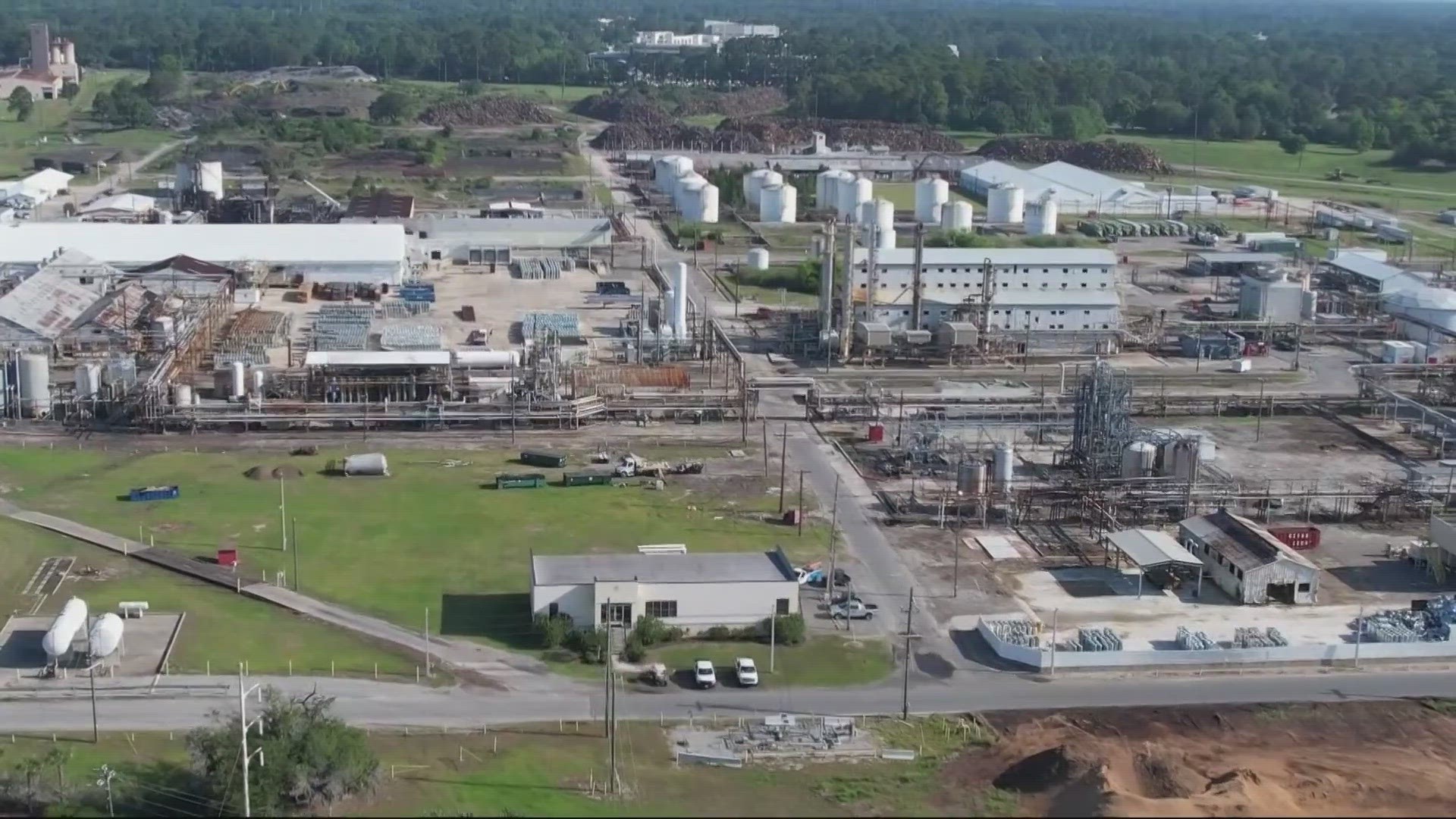BRUNSWICK, Ga. — Fires and explosions at two chemical plants five months apart, the largest wreck removal in U.S. history and a legacy of environmental ruin at four federal superfund sites have some people in Glynn County, Georgia, feeling like the odds are stacked against them and the environment.
Glynn County has long been a hub for industry, but are those industries being held accountable when there’s an environmental disaster? Some in the community say they’re not and it’s time to end the county’s toxic legacy.
In a span of five months, the county experienced explosions at a Symrise manufacturing plant in November and a fire at Pinova manufacturing plant in April, both forcing evacuations.
The Symrise explosions and firefighting efforts led to a fish kill. Then, there was another fish kill outside Sunbelt Forest Products in December.
This all followed the capsizing of the Golden Ray cargo ship in the St. Simons Sound in 2019, which carried 4300 vehicles. The ship caught fire multiple times and leaked huge quantities of oil and other industrial fluids
Just like the Golden Ray was visible for two years during its cleanup in the St. Simons Sound, the recent chemical plant fires are not happening out of sight. Some residents’ backyards go up to the Pinova plant’s fence. Part of the neighborhood there is government housing.
"The smell for me was very intense for days,” said Anita Collins, vice chair of Urbana Perry Park Neighborhood Planning Assembly.
Collins grew up in Brunswick and is a leader in her neighborhood. She says some neighbors experienced health issues after the Pinova fire.
“Headaches, burning eyes, breathing,” Collins listed.
The Pinova plant, which makes wood resin, has operated about a mile and a half from downtown Brunswick for more than 100 years, formerly under the company, Hercules. Hercules produced the pesticide toxaphene until 1980, according to the company’s website. Toxaphene is now classified by the Environmental Protection Agency as a "probable human carcinogen."
“Just think about how many individuals have grown up with that plant being right where it is,” Collins said.
First Coast News questioned Georgia’s Environmental Protection Division about the plume of smoke from the Pinova fire. The division says air readings from three locations don’t show any emissions that exceed the plant’s permitted levels.
The county of 85,000 people is also home to four federal toxic waste sites. That toxic legacy prompted a study by Emory University. Researchers are screening residents for the presence of chemicals like mercury and PCBs which were dumped in the area by local industries for decades.
“Right now, there seems to be a lack of oversight and a lack of proactive actions by industry and a lack of strict enforcement,” said Maggie Van Cantfort with Altamaha Riverkeeper.
Environmental advocates like Van Cantfort say companies do not face proportionate repercussions. One example they give is how the cleanup of the Golden Ray cost $1 billion and the ship’s owner, Hundai Glovis, was penalized $3 million.
“The marsh provides extreme environmental services to the world,” Van Cantfort said. “All of the regulatory agencies from the state EPD on down to the local level need to be holding the business sector and industry accountable.”
Glynn County Commissioner Cap Fendig says the county, city and companies must work together.
“These are older plants,” Fendig said. “They need upgrades. We're asking the EPD to look at that.”
At a meeting following the Pinova fire, it was revealed that neither the plant nor local firefighters had the materials needed to fight the fire.
“What we did in that meeting was put all of our industrial plants on notice,” Fendig said. “Number one, they're going to have to make arrangements to store foam on site that's appropriate to the type of chemicals that they're messing with that could turn on a fire.”
Collins says there needs to be more pressure applied in the courts and in the court of public opinion.
“Litigation has to occur,” Collins said. “And not only litigation, but demands for them to either do better or leave the community."
Fendig says collaboration within the community must be prioritized.
“It involves partnerships with state and federal governments and agencies,” Collins said. “That's a slow wheel of progress, but the Glynn County Commission is determined to work with the city commission and be that voice for the people and get those changes done.”
Pinova’s senior director of operations said in a statement, the company is committed to finding the cause of the fire and increasing fire safety. According to the EPA, the plant is considered a “significant noncomplier” of regulations governing hazardous waste disposal and has been fined $365,000 over the last 10 years. It was also cited by OSHA in 2021 for exposing employees to chemicals.
But Pinova is just one of Glynn County’s many industrial facilities and the fire there was only the most recent problem.
“What we’re talking about is legacy pollution in this county,” said Collins.
Neighbors like Collins says it’s up to local, state and federal officials as well as companies to stop the next disaster before it happens.
There will continue to be public meetings for those impacted by evacuations. Learn how to get involved the ones Collins is a part of here.

